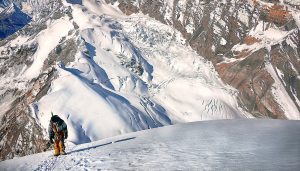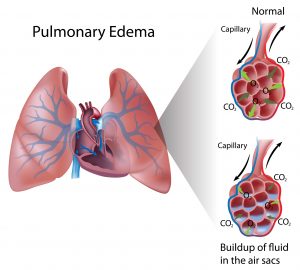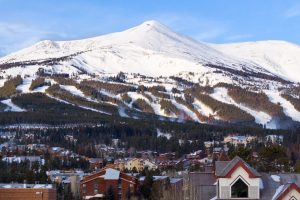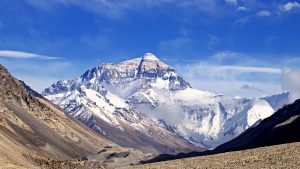
What is HAPE?
The most common cause of death directly attributed to altitude is High Altitude Pulmonary Edema, or “HAPE.” Caused by a lack of oxygen, HAPE is an advanced stage of Acute Mountain Sickness (AMS). In conjunction with the breakdown of glucose, fats, and amino acids, oxygen is necessary for our bodies to produce energy. Too little of it reduces the body’s ability to perform essential metabolic functions, resulting in symptoms such as headaches, fatigue, shortness of breath, dizziness, confusion, loss of appetite, and vomiting.
Sound Familiar?
Many of us have probably experienced the mild symptoms of AMS before. When rapidly ascending from a lower elevation, the effects can be felt at as low as 8,000 ft( the approximate elevation of Vail, CO). So, it is not uncommon for people traveling to the mountains from lower elevations to feel some altitude-induced discomfort. AMS is a drag but usually eases with a few rest days as our bodies adjust to the thin air.
When to Worry…
However, in more severe cases—when an ascent is too rapid and too high—there is the risk of high-altitude pulmonary edema. “Pulmonary” refers to the lungs, and “edema” refers to excessive fluid buildup in the body’s tissue.

Though it’s still somewhat a subject of medical investigation, the working theory is that in response to severe oxygen deprivation, the blood vessels in the lungs constrict, and pulmonary hypertension occurs. Combined with lower air pressure at high altitudes, these effects cause fluids to leak from blood vessels into the lung’s air sacs.
This potentially lethal condition is recognized by a persistent dry cough, trouble breathing at rest, and tightness in the chest. Victims typically make a wheezing sound when they breathe, and their skin may turn blue—a condition called “cyanosis.” In the advanced stages, the victim might cough up a frothy pink substance known as “sputum.” Other factors contributing to the onset of HAPE are cold temperatures, physical exertion, and—something that still puzzles doctors—being male.
How Concerned Should I Be?
Although a pressing concern for high-altitude mountaineers in the greater ranges, HAPE is far less common in the lower forty-eight. Statistics vary, but according to Paul Auerbach’s book Wilderness Medicine, approximately only .01% of skiers at moderate altitudes in Colorado experience HAPE compared to 2% of climbers on Denali and 6% of climbers in the Alps. Still, over a three-year period, 150 cases of HAPE were reported at a Colorado ski resort that sits at 9,606 ft (presumably Breckenridge—the highest ski resort in North America, which tops-out in elevation at just under 13,000 ft).

Auerbach also cites a case-study of HAPE in the Sierra Nevadas. A physically fit 34-year-old man ascended from sea level to 12,139 ft in two days. Despite his experience hiking at altitude, the man developed HAPE and required helicopter rescue.
What to do if Symptoms Appear…
Portable hyperbaric chambers, injectable corticosteroids, and bottled oxygen temporarily relieve the effects of HAPE, but the only lasting treatment is a rapid descent of 1,000 or more vertical ft. As with any medical condition, however, the most effective treatment is prevention. Everest climbers use a routine of ascending to successively higher camps and descending to sleep between each climb. Thankfully, that routine is not necessary for those of us below 26,000 ft.

Above 9,800 ft, experts recommend not increasing sleeping elevation by more than 1,600 ft per day. Experts also recommend resting every three to four days on the ascent and drinking plenty of water. It is wise to heed this advice even if you have extensive experience at high altitudes. Even permanent high-altitude residents are at risk of re-entry HAPE if they descend and return. There is no reliable method to determine if somebody is more, or less, predisposed to HAPE.
Auerbach, P. S., Cushing, T. A., & Harris, N. S. (2017). Auerbach’s wilderness medicine. Philadelphia, PA: Elsevier.